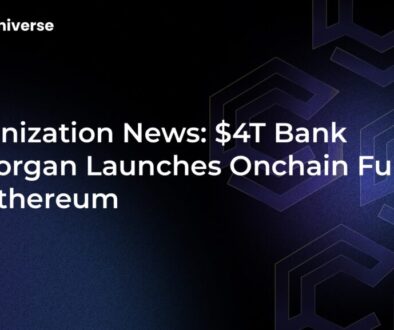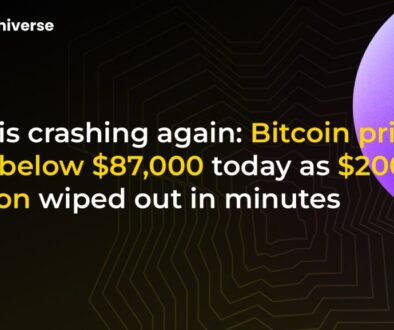The Wholecoiner Club: Why So Few People Own a Full Bitcoin

The Six-Figure Status Symbol: Why Owning One Bitcoin is a Bigger Deal Than Ever
With Bitcoin’s price holding strong above the $100,000 mark, the dream of owning a single, whole bitcoin has become a significant financial milestone. But as the world’s leading cryptocurrency gains mainstream acceptance, a fascinating trend is emerging from the blockchain data: the club of individuals who own at least one full BTC is surprisingly small and incredibly exclusive.
While millions of wallets are active on the Bitcoin network, the number of “wholecoiners” tells a story of scarcity, institutional accumulation, and a rapidly changing ownership landscape. Let’s dive into the data to understand why so few people own a full Bitcoin and what this means for the future of digital assets.
Built-in Scarcity: The Foundation of Bitcoin’s Value
Before we look at who owns what, it’s crucial to remember Bitcoin’s core design. Unlike traditional currencies that can be printed indefinitely, Bitcoin has a hard-coded supply limit.
- A Finite Supply: There will only ever be 21 million bitcoin created. As of today, nearly 20 million are already in circulation.
- The Halving Effect: Every four years, an event known as the “halving” cuts the reward for mining new bitcoin in half. This process systematically slows down the creation of new coins, making the existing supply increasingly scarce and valuable over time.
This built-in scarcity is the primary reason why owning just one out of a potential 21 million coins is a significant achievement.
Breaking Down the Numbers: Who is in the Wholecoiner Club?
Public blockchain data gives us a transparent, if not perfectly clear, picture of Bitcoin distribution. The numbers reveal a classic pyramid structure, with a tiny fraction of holders at the top.
According to on-chain analytics, there are approximately 983,000 wallet addresses that hold one or more BTC. While that sounds like a lot, compare it to the more than 54.6 million wallets that hold smaller, fractional amounts of Bitcoin.
However, the real number of individual wholecoiners is even smaller. Why? Because a single entity can control multiple wallets. When we account for cryptocurrency exchanges and large corporations that spread their holdings, the estimate for individual people who own a full Bitcoin drops to a range of 800,000 to 850,000 worldwide. In a world of 8 billion people, this is an exceptionally exclusive group.
The Rise of the Corporate Whales
A major reason the wholecoiner club isn’t growing faster is the voracious appetite of institutional and corporate investors. These entities are buying up Bitcoin as a treasury reserve asset, effectively removing large quantities from the open market.
The most prominent example is Strategy Inc. (formerly MicroStrategy). The software company has transformed into a major Bitcoin treasury, holding a staggering 628,791 BTC. At recent prices, their holdings are worth over $72 billion.
Following in their footsteps, other publicly traded companies like GameStop Corp. (GME) and Marathon Holdings (MARA) have also begun adding Bitcoin to their balance sheets. Furthermore, exchanges like Binance hold massive reserves for their customers, with one Binance-controlled wallet containing over 248,000 BTC—the largest single concentration on the network.
What’s Fueling the Price and Concentrating Ownership?
Bitcoin’s journey past the $100,000 mark, with a record high of over $123,000, isn’t accidental. Several powerful factors are at play:
- Mainstream Adoption: Bitcoin is increasingly viewed as a legitimate asset class and a hedge against inflation.
- Favorable Political Climate: A more crypto-friendly stance from governments, such as the one noted during the second Trump administration, has boosted investor confidence.
- Institutional Investment: The trend of firms adding BTC to their treasuries is seen as a pivotal step toward its adoption as a global reserve asset.
This wave of large-scale buying puts immense pressure on the available supply, making it more expensive and challenging for the average person to acquire a full coin.
You Don’t Need a Whole Coin to Participate
Does this mean you’ve missed the boat? Absolutely not. The beauty of Bitcoin is its divisibility. A single Bitcoin can be divided into 100 million smaller units called satoshis (or sats).
Instead of focusing on the daunting goal of owning a whole coin, a more practical and powerful strategy for most is “stacking sats.” Accumulating small fractions of Bitcoin over time allows you to gain exposure to the asset and become part of the network without needing six figures of capital upfront. In the world of Bitcoin, every sat counts.
The Future of Bitcoin Ownership
The data is clear: the opportunity to become a “wholecoiner” is shrinking as institutional players dominate the market. The club of those who
However, the story of Bitcoin is not just for the whales. It’s for everyone who believes in a decentralized financial future. Whether you own a whole coin or just a few thousand sats, participating in the network is what truly matters. As Bitcoin continues its journey into the mainstream, owning any piece of this scarce digital asset may prove to be one of the most significant financial decisions of our time.


